Kullu Valley
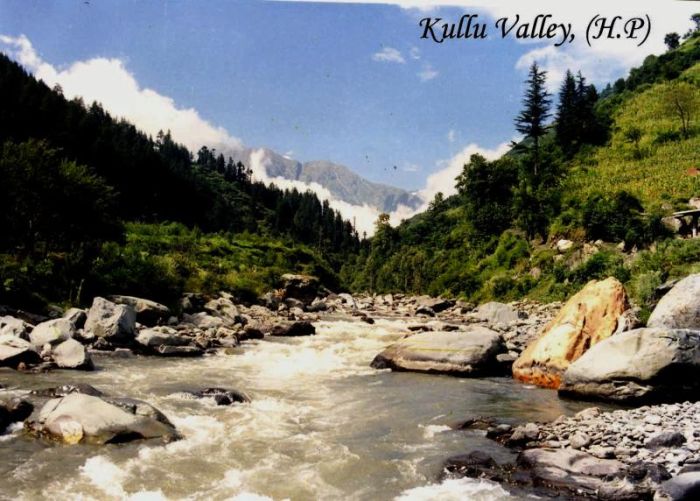
The Land of Gods, Kullu for many is also the land of festivals. The region is dotted with beautiful and charming temples and shrines dedicated to various deities, gods and goddesses. People of the Kullu Valley are religious and close to nature; they celebrate every festival and worship their gods with fervor and pomp.
Rich in the culture, the place is also a visual treat. Clusters of beautiful valleys on both sides of River Beas with misty meadows, gushing streams, apple orchards and snow clad peaks, all are very inviting to the human senses.
A hotspot for all adventure lovers, many people are attracted to Kullu for trekking, river rafting, mountaineering, paragliding and many other sports. The nearby Hanuman Tibba and Deo Tibba are ideal places for any nature lover, who cannot traverse over the roughness of the mountains, yet wants to experience the thrill of trekking and mountaineering.
Getting here– The closet airport near Kullu is at Bhuntar, which is just 10 km from Kullu. Taking the road, you can use NH21 and reach Kullu via Bilaspur, Sundernagar, and Mandi.
Climate– The climate here changes periodically. The summers are pleasant, but winters cold enough with temperatures falling below zero degrees.
Best time to visit– Although you can visit Kullu throughout the year, if sightseeing is your main purpose, then summer months from March to June are the best. If snow enthralls you, come here between December and March.
Chamba
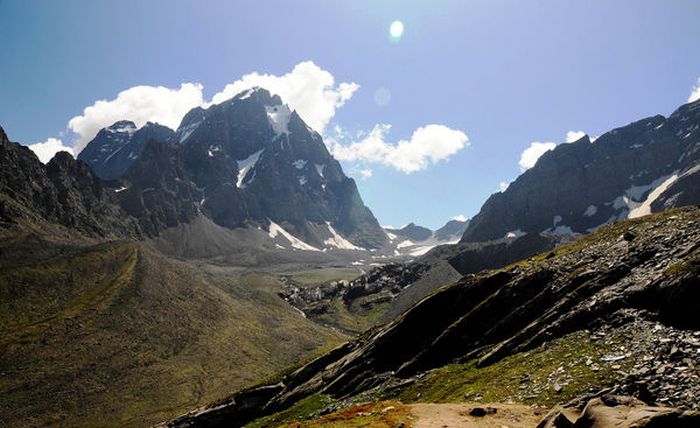
Some say Chamba is the reigning beauty of Himachal Pradesh, not just for its scenery, but for its beautiful Himachali girls. Miles away from the hustle and bustle of cities and towns, this rather lazy hill station is known for its exquisite temples mostly dedicated to Lord Shiva and Vishnu. The temple of Laxmi Narayan and Hari Rai are widely known and devotees from all over come here to pay reverence to the Gods for their well being and prosperity.
Apart from the religious sanctity of the town, it is toured by many for River Rafting and Skiing. Since the town rises above the River Ravi, many government departments and private organizations conduct river excursions every year. The forests covering the region around the valley support a rich wildlife. From wild goats, to leopards and musk deer, it is home to a variety of dangerous animals.
Chamba is also famous for its artifacts and paintings. This is perhaps the reason why you will come across many Museums in the town displaying both canvas paintings as well as murals.
Getting here– the nearest railway station is at Pathankot Railway station, about 120 km from Chamba. Roads from Chamba are well connected with Delhi, Amritsar, and other northern cities, so commuting will not be a problem.
Climate– summers in Chamba are pleasant, with temperatures never exceeding 28-30 degrees. Winters are cold with temperatures dropping to around 4 degree Celsius.
Best time to visit– the summer months from June to October are the most ideal for visiting Chamba since tourist can derive maximum pleasure from outdoor activities.
McLeod Ganj
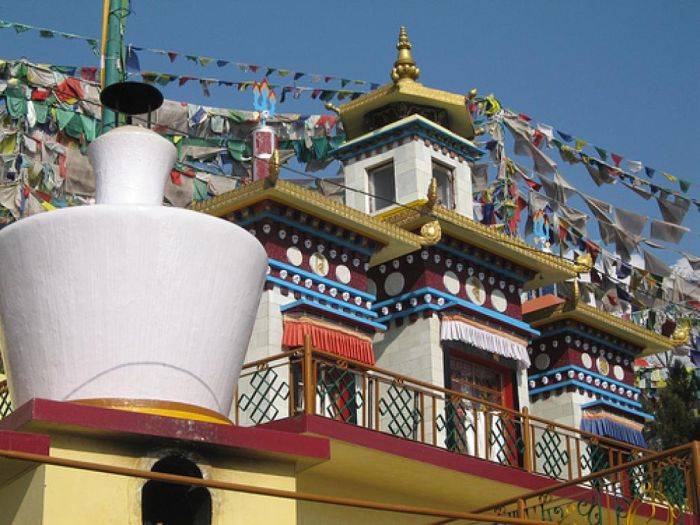
The Lhasa of India, perhaps known so because McLeod Ganj is now where the exiled Tibetan leader, His Holiness Dalai Lami resides. Situated in the Dhauladhar ranges, it is also called Upper Dharamsala. Predominated by the Tibetan Culture, this small town of the Trans Himalayan region is not like any other town in Himachal Pradesh. It is named after David McLeod, the governor of Punjab during the reign of the Britishers. You will find Colonial structures, monasteries, temples and schools all over the place. All co-exist in one place, making the town an interesting mix of diverse eras and faith.
While its religious status predominates other aspects, the second well known attribute of the town is that it an ideal destination for trekking. The most famous trek being to Bahrmour, which lies across the Indrahar pass. For visitors not wanting to dare the mountains, you can simple walk around the town and take a trip to Bhagsu, about 2km, or to Dharamkot, 3 km from McLeod Ganj. Both these places reveal vast expanses of the rising snow clad Dhauladhar range.
Getting here– The nearest airport to McLeod Ganj is at Kangra, 20 km away from here. Other than that it is well connected to Dharamshala, which in turn is well connected to other parts of Himachal and cities like Delhi and Amritsar.
Climate– summer temperatures range between 28 to 30 degree Celsius. Winters are cold with snow covering the region.
Best time to visit – you can visit McLeodganj all round the year, but maximum charm is during the months of February and March when they organize the Losar Festival.
Khajjiar
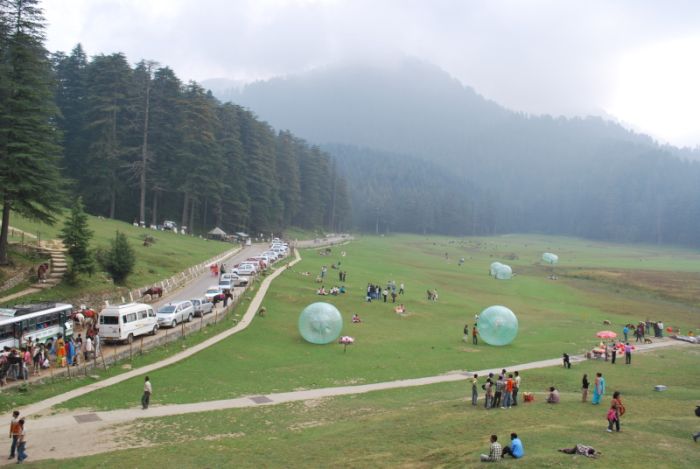
This small hill station never escapes from a wow from any visitor. Its plush meadows, surrounded by dense pine and cedar forests make it look like Gulmarg. You will always find cattle grazing on its pastures by the beautiful lake right in the middle of the meadow.
For years now, this place has been a synonym to Switzerland for its resemblance to the tropical surroundings of foreign town. It features a Kalatop sanctuary, which will particularly delight the wildlife lovers. Also there is the Khajji Naga Temple considered the most sacred place around the region.
Since there is not much this small town can offer except for its scenic splendor, the best way to explore it is by trekking. This hamlet is a starting point for many treks to Chamba, Dalhouise, etc. Zorbing is also popular; it’s the sport where you roll down the hill in a specially designed plastic balloon.
Getting here– It is located 24 km from Chamba and commuting to this place is easy.
Climate– Summers are pleasant with not much heat and winters are chilling cold, yet bearable.
Best time to visit– The best months to visit Khajjar are during summers, but watching the pristine snow clad Khajjar, is another experience altogether.
Kaza
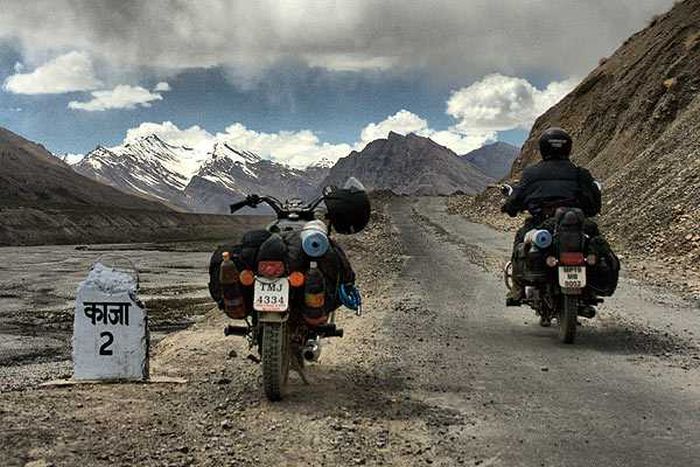
Kaza is stunning town and the main administrative headquarters of the Spiti Valley. Situated along the Spiti River, this barren arid town clearly exists in contradiction. While some patches will astound you with their greenery, others will put you in a dizzy of dust clouds. The most alluring part of the town is the new Kaza, also called Kaza Khas, this place is abundant with monasteries, gompas and other historical buildings. The ancient and colorful aura that surrounds the town, whether it’s the people, the architecture, or the handicrafts, attracts tourists from all over the world.
Famous monasteries like the Tabo monastery, one of the oldest is located here. It highlights the Tibetan culture and its walls are up with ancient murals depicting the history of the region. Other places in the vicinity worth visiting are the Key Monastery, Dhankar Monastery, Kiber, and many other small places. Visitors cannot leave this place without visiting the Chandra Tal Lake, also fondly called the moon lake. Its crystal clear waters ringed by grassy hillocks is a scenic splendor you wouldn’t want to miss.
Getting here– You can access Kaza via Shimla as well as Manali. The Shimla road takes you to Kaza via Rekong Peo, 445 km and you can also use the route via Manali, Rohtang and Kunzum, about 213 kilometers.
Climate – Kaza is a cold desert with dry weather. The winter temperature goes down way below the zero degree mark and locals hardly move out of their homes. You have to wear mild woolens during summers and heavy woolens in winters.
Best time to visit – summer months from May to October are the best for planning your visit to Kaza. After that the roads remain closed for the winters.
